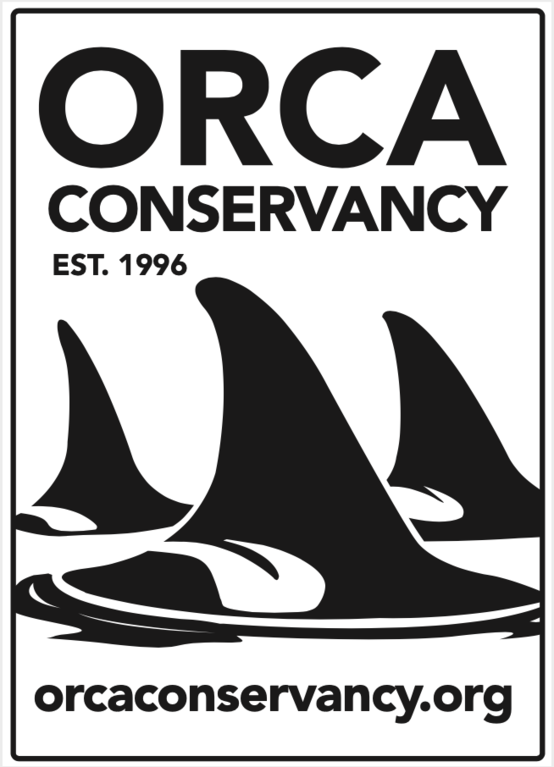VICTORY - Oyster growers agree to abandon quest to use controversial insecticide in Southwest Washington tidelands
Often times Orca Conservancy finds that our work extends outside of working directly with the Endangered Southern Resident killer whale (SRKW) population. This is one of those times.
It's incredibly important to note the SRKW population spends substantial time in coastal areas of Washington, Oregon and California and utilize salmon returns to these areas.” These coastal waters are recognized as an essential foraging area for this critically endangered population in the winter and spring, and are currently under consideration to be designated as critical habitat for the SRKW. The ESA-listed Pacific salmon from the Columbia River use the coastal estuaries to rear. Activities reducing available prey directly affect their growth, and hence their survival (NMFS 2009). Salmon and forage fish are intrinsically important, and also are important economic resources.
Lastly, I couldn't be more excited of this victory! I am beyond blessed to work alongside a passionate and forward thinking Board. Today is a good day.
Shari
President

Oct. 21, 2019 at 6:00 am
Oyster growers agree to abandon quest to use controversial insecticide in Southwest Washington tidelands
By Hal Bernton Seattle Times staff reporter
A Southwest Washington oyster growers association has abandoned a quest to use a controversial insecticide that combats burrowing shrimp, a creature that can make tidelands unfit for shellfish farming.
In a settlement reached last week, the Willapa Grays Harbor Growers Association agreed to accept a 2018 state Ecology Department denial of the proposed use of imidacloprid and drop an appeal to the state Pollution Control Hearings Board.
The growers wanted to use the insecticide to spray up to 500 annually of the more than 12,000 acres of tidelands used for shellfish cultivation in Willapa Bay and Grays Harbor. Without the spray, the growers say they lose productive tidelands to the shrimp, which churn up sediment and can cause oysters, as well as clams, to suffocate in the muck.
The proposed imidacloprid spraying was opposed by National Marine Fisheries Service because of risks to other marine life, and it triggered a public backlash led by some high-profile Seattle chefs.
The settlement, however, could set the stage for another type of insecticide attack on the shrimp. That’s because it calls for development of an alternative control plan to include chemical, as well as other approaches, according to a 15-page settlement document filed last week with the state.
Though the settlement says chemical use should be minimized, it also lays out a timetable of 2020 field trials of any alternative insecticides that appear feasible to kill the burrowing shrimp, and a joint effort by Ecology and the growers to secure $650,000 from the Legislature to fund a broader research effort.
“This is one of the hopes of the settlement, that we can find these alternatives. Currently, nothing has been identified,” said David Beugli, project coordinator for the Willapa Grays Harbor association, which signed the agreement.
Beugli said that not all the association’s members were involved in the appeal.
Colleen Keltz, an Ecology Department spokeswoman, noted the agreement still has to be approved by the state board to become final.
Oyster aquaculture is the biggest-dollar contributor to a state shellfish-farming industry that generates nearly $150 million annually, according to a 2013 study, and in some rural areas of coastal Washington, such as Willapa Bay, is an important source of jobs and tax revenue.
Intensive cultivation of oysters and other shellfish can have adverse impacts on other marine life that inhabit tidal areas. And last week, critics of these operations gained a significant federal court victory when U.S. District Judge Robert Lasnik tossed out a permit the Army Corps of Engineers had issued for Washington state shellfish farms in a ruling that will mean more federal environmental scrutiny.
Critics of the oyster farms also have long fought the industry’s use of pesticides.
For years, growers in the Willapa Bay area used carbaryl, a chemical that affects the nervous system and can kill aquatic life. After carbaryl was phased out, some growers sought permission to use imidacloprid, a neurotoxin that can also harm marine life.
But in 2018, the Ecology Department turned down that request, triggering the growers’ appeal that will end if the settlement is approved by the state board.
The agreement would set up a “working group” to develop the alternative plan. It would include state and industry officials as well as a mutually agreed upon environmental representative.
During the appeal process, some environmental critics of the oyster growers gained status as “intervenors.” One of those intervenors, Larry Warnberg, said he had hoped to participate in the settlement talks but was excluded. He intends to participate in a state-board conference call Monday about the settlement and will request more time for comment.
Warnberg and other intervenors do not want a new chemical used to fight the shrimp.
“Willapa Bay and Grays Harbor are unique and fragile places. Our understanding is many oyster and clam growers have successfully achieved a balance between the shrimp and their farmed shellfish without the use of dangerous pesticides,” said a statement released by three intervenors — the Center for Food Safety, Center for Biological Diversity and Coalition to Protect Puget Sound Habitat.
The burrowing shrimp include two species, a mud shrimp that has been in sharp decline because of a parasitic infection and ghost shrimp, whose numbers have been on the rise both in areas that were formerly sprayed and other coastal areas.
The reasons the ghost shrimp population has increased are not well understood, in part, because there is not a lot of long-term information, according to a state environmental study. Researchers have suggested that changes in the watersheds caused by human activities such as logging, farming and shellfish farming, may have boosted their populations. They also may have benefited from shifts in climatic conditions, according to the study.
John Chapman, an Oregon State University scientist, said the ghost shrimp sift the sediments as they feed, and this can end up burying oysters.
“They (the shrimp) are essentially mining the sand,” Chapman said.
Beugli said areas taken over by the shrimp are some of Willapa Bay’s prime sites for oyster production and have high value to growers. Some acreage, though, can no longer be used for oysters, according to Beugli.
Mechanical treatments, such as deep harrowing that stirs up sediments, may be used to control the shrimp. But these tactics also can have adverse effects.
Under the settlement, researchers would continue to search for other means to kill the shrimp. The documents also call for studies that would put dye in the water to better understand how chemicals, if applied, move through the estuaries.Hal Bernton: 206-464-2581 or hbernton@seattletimes.com; on Twitter: @hbernton.




